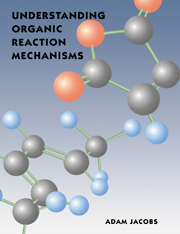Book contents
Summary
In the vast majority of organic reactions, electron-rich species interact with electron-deficient species. In this chapter we will concentrate on molecules with either a whole or a partial electric charge. We will look at the sorts of charged species we can expect to find in reactions, and the factors that govern their reactivity.
One of the most common ways for charge to be introduced into a molecule is by reactions with acids or bases, so a discussion of these will form a large part of the chapter. We will see what makes some acids and bases stronger than others, and we will see how they may catalyse reactions.
Concepts and definitions
Electron-rich species are known as nucleophiles. The name suggests that they love nuclei, and since nuclei are positively charged, this makes sense. An electron-rich species will certainly be attracted to positive charges. Nucleophiles may have either a negative charge or an available electron pair. We saw in Section 1.3 that curly arrows begin at electron sources; organic reactions are systems of electron flow, and the nucleophile is the source of the electrons.
The name given to an electron-deficient species is an electrophile. Again, the name is a clue to its nature; electrophiles love electrons, as they are deficient in them. Electrophiles are often positively charged, but need not be. One of the commonest electrophiles is the carbonyl group, in which the carbon is electron-deficient because the electronegative oxygen pulls the electrons in the bond towards itself.
- Type
- Chapter
- Information
- Understanding Organic Reaction Mechanisms , pp. 30 - 58Publisher: Cambridge University PressPrint publication year: 1997

